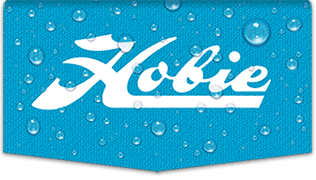Lead Belly wrote:
Quote:
I'm sure he would greatly appreciate any additional advice he can get.
FE
The list is already impressive:
- Run them up wind into a chop
- Change seat back to original, add rocker and hard chines (probably suggested as longer term improvements)
- Shallow pedal as well as paddle
- Lose weight (change gender?)
- Ask them to carry extra weight (picnic hampers, water etc.)
- Switch to deeper water where mirage drive can be fully employed
- Keep to longer distances so that you can play to the endurance advantages of mirage drive
Holy women in seakayaks, Roadrunner, what do we do now!?


Great comments in general. Obviously the Revo 16 is not built as a paddle-dominant boat and is not particularly competitive as such. Redesigning the rocker and chine is also moot. Losing weight is something many of us seek but rarely achieve.
There are two main areas that have not been exploited on this topic so far:
1. The Mirage Drive has to be optimized to it's best efficiency. It needs to be tuned to operate as smooth as butter. The fin set-up can make a significant difference. If left stock, fins need to be loosened (clew outhaul adjust) to direct the thrust applied to a forward direction.
2. The hull has to stay on its "lines" as much as possible to maximize the waterline length available (closely related to the length/width discussion). This is done with a small weight in the nose. This varies according to cruise speed, kayaker's weight and of course boat model. For the '16 we're finding 7-8 lbs in the extreme nose works up to about 5.8 to 6 MPH. The weight penalty for this is extremely minor but the alternative of shorter LWL due to hydrodynamic lift at speed is far worse. This will add up to about 1/10 MPH at fast cruise. Exact determination of weight is decided by observation -- must be enough to keep the bow in contact with smooth water at the user's sustainable cruisee speed. 1/10 doesn't sound like much, but the little things add up over the course of time, distance and fatigue.
My friend Mike, who can regularly cover 5.75 to 6.0 miles in an hour (smooth fresh water) with his Adventure, also does a couple of other things. for smooth water, he goes back to the small rudder for less wetted surface and has added a small winglet mounted horizontally on his rudder. It sits above the waterline at slower speeds. but engages as the stern squats at faster cruise speeds, assisting in keeping the boat level (back to the LWL) (this is in addition to the bow weight).
There are some pedaling techniques -- subtle but noticeable, that can assure maximum performance. Obviously full leg extension is important. Lifting the recovery leg on the stroke is a good habit to get to get into. Full strokes (once at speed) keep the fins engaged longer). A comfortable seat to keep good blood circulation to the legs pays off in the long run. More small things.
If you know the Revo 16 can cruise at or near 6 MPH with someone who is fit, has a streamlined boat, tuned and adjusted Drive and good pedaling technique, you'll be pretty darned competitive! It takes a little time and effort to get it all dialed in, but the results are there for those who want to achieve them!
Shallow water does complicate things -- the shallowness dictates the options. ST fins are two inches shorter and should be able to yield a respectable cruiseof about 5.5 MPH if full strokes an be achieved. Beyond that, Turbos along with an advanced flutter kick would probably still be faster than a paddle.
viewtopic.php?f=11&t=55309&p=259904&hilit=#p259904Finally, there is always the pedal/paddle option. It takes a lot of practice to harmonize the two simultaneously, but does add speed and is great exercise!






